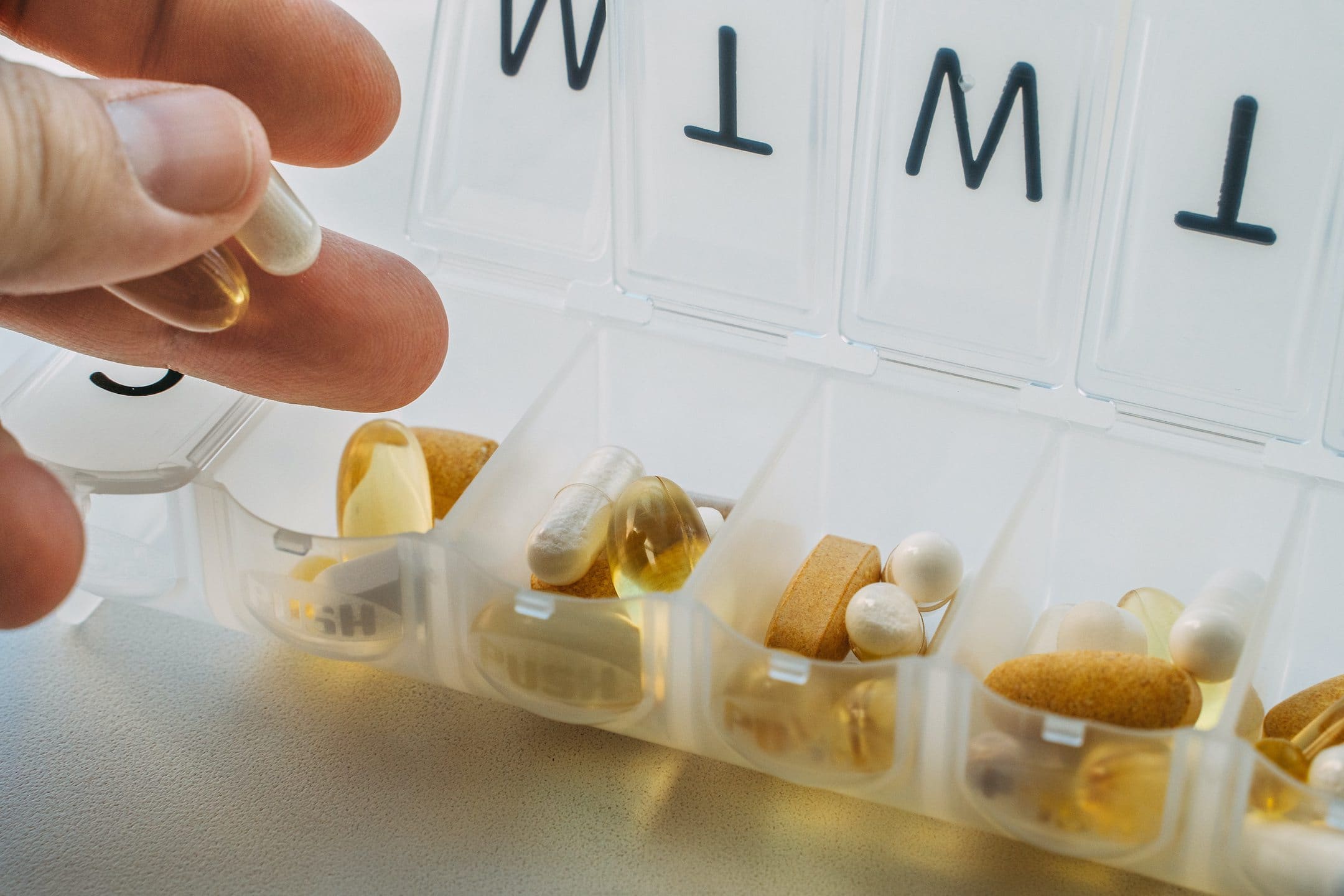What is retrograde ejaculation, and how does it cause “dry orgasm” and infertility?
Before ejaculation, sperm travels from the vas deferens to the prostate, where it mixes with other fluids to create semen. During ejaculation, the semen is ejected through the urethra, a tube that connects to both the reproductive system and the bladder.
In order for this expelling process to occur, the muscle at the entrance to the bladder must tighten, to seal off the organ and prevent semen from flowing backward into the bladder. When the bladder neck muscle is unable to perform this function, retrograde ejaculation occurs. Find out what retrograde ejaculation entails, what causes it, and what the research has to say about its effects on male fertility.
Takeaways:
- Retrograde ejaculation occurs when the bladder neck is unable to close during orgasm, allowing semen to travel back into the bladder.
- Causes for retrograde ejaculation include surgeries performed on the bladder or prostate, certain medications, and nerve damage.
- Though painless and generally harmless, retrograde ejaculation can negatively affect fertility.
- There are various treatment options available, including testicular sperm extraction, non-surgical sperm retrieval, and certain medications.
What is retrograde ejaculation?
Retrograde ejaculation occurs when the bladder neck muscle is unable to close during orgasm, allowing semen to flow back into the bladder instead of out of the penis.
People who experience retrograde ejaculation have very little or no semen come out from the penis during climax. They may also notice cloudy urine after sex or masturbation, indicating that semen is being released from the bladder. This condition is sometimes referred to as a “dry orgasm,” although retrograde ejaculation specifically refers to the anatomical failure of the bladder neck, whereas dry orgasm can occur for a number of unrelated reasons.
What causes retrograde ejaculation?
There are a few potential causes of retrograde ejaculation. These include surgeries performed on the bladder or prostate, certain medications, and nerve damage — anything that impairs the function of the bladder neck muscle. Here is what the research says:
Surgery
Surgeries performed on the bladder or prostate that cause damage to the bladder neck can cause retrograde ejaculation. According to a 2020 study, the “vast majority” of people undergoing prostatectomy, in which all or part of the prostate gland is removed, experience permanent retrograde ejaculation. This is due to destruction of the natural mechanisms preventing backflow of the ejaculate into the bladder.
Medication
Certain medications used to treat prostate enlargement, high blood pressure, and depression may cause retrograde ejaculation.
As indicated in a 2007 study, alpha blockers used to treat high blood pressure and benign prostatic hyperplasia (enlarged prostate) have been linked to retrograde ejaculation. This includes the alpha blocker tamsulosin, sold as Flomax. However, one 2006 study did show that when tamsulosin was used intermittently, normal ejaculation did recover.
Studies also show that some drugs prescribed to treat mood disorders, such as SSRIs and antipsychotics, can also cause retrograde ejaculation or delayed ejaculation.
Nerve damage
According to a 2016 study, retrograde ejaculation may also be the result of damage to the nerves that control the bladder neck muscle. This nerve damage may be caused by a number of conditions such as diabetes, multiple sclerosis, or spinal cord injuries.
What are the symptoms of retrograde ejaculation?
The most obvious symptom is reduced or no semen during climax. Signs and symptoms of retrograde ejaculation include:
- Little to no semen released from the penis during orgasm
- Cloudy urine after sex or masturbation
- Inability to conceive (infertility)
Retrograde ejaculation will not affect a person’s ability to get an erection or have an orgasm. When it comes to sexual pleasure, reports vary. Some say retrograde ejaculation feels like a “normal orgasm,” while others find the experience “unnerving.”
How is retrograde ejaculation diagnosed?
Though retrograde ejaculation is not harmful or painful, you should see a doctor to ensure that the condition is not being caused by an underlying issue that requires medical attention.
A doctor will first ask you a number of questions about your symptoms and then physically examine your genitals. The primary diagnostic test for retrograde ejaculation is called a post-ejaculation urinalysis or PEU. During a PEU, your post-ejaculation urine will likely be tested for the presence of sperm or semen; you will be asked to empty your bladder, masturbate to climax, and then provide a post-masturbation urine sample.
How does retrograde ejaculation affect fertility?
Research has shown that retrograde ejaculation can interfere with fertility problems, as it causes low semen volume and a low or absent sperm count with subsequent subfertility. In one study of 207 patients with infertility issues, 84 had retrograde ejaculation. These patients also had lower levels of follicle-stimulating hormone, luteinizing hormone, and testosterone than those without retrograde ejaculation.
How can retrograde ejaculation be treated?
There are a number of different options for retrograde ejaculation treatment. This includes testicular sperm extraction, non-surgical sperm retrieval, and even certain medications that may improve muscle tone in the bladder and help you ejaculate normally.
Urinary sperm retrieval
One option is to retrieve sperm directly from the post-ejaculate urinalysis. The sperm can then be used for fertility treatments. Some studies show that retrograde ejaculation can reduce sperm motility and velocity, due to acidification from the urine, when sperm is retrieved from the bladder. Therefore, some doctors use techniques like injecting a pH-buffered solution into the bladder beforehand to lessen the impact on sperm health.
Surgical sperm retrieval
Both testicular sperm extraction (TESE) and testicular sperm aspiration (TESA) involve surgically retrieving sperm from the testicles. This is achieved with a nerve block, which “turns off” pain signals to the brain while sperm is extracted via a small cut or a needle puncture in the testes. Retrieved sperm can be used fresh or frozen for later insemination.
According to one 2013 study, cryopreservation of testicular sperm tissues was considered to be “more suitable and of great benefit” when used in IVF cycles. While the fertilization rate was not significantly different between fresh and frozen sperm, using cryopreserved sperm allows doctors to know whether sperm is available for intracytoplasmic sperm injection (ISCI) prior to egg retrieval. Another 2010 study indicated that ICSI with frozen-thawed micro-amount sperm obtained by TESA is also a safe, economic, and effective method for the treatment of infertility due to azoospermia.
Medication
Medication may be an option for those who do not have permanent physical changes to their anatomy (such as after surgery). Medications used to treat retrograde ejaculation — most prescribed off-label — include imipramine (Tofranil), midodrine, chlorpheniramine, ephedrine, and brompheniramine. These medications aim to keep the bladder neck muscle closed during ejaculation.
If, on the other hand, the retrograde ejaculation is caused by a medication, the patient may want to temporarily pause their use of the medication, if they can do so safely, or explore other options for sperm retrieval.
The bottom line: Retrograde ejaculation is not harmful, but it can negatively affect fertility.
While retrograde ejaculation may not be harmful or painful, it can be an issue when trying to conceive. In addition to switching medications that may be causing the condition or considering sperm retrieval options to improve your chances of fertility, it is also important to follow healthy lifestyle practices. This includes following a nutritious diet, limiting sugar and alcohol intake, and exercising regularly. Find more tips in our Guide to Sperm Improvement.



